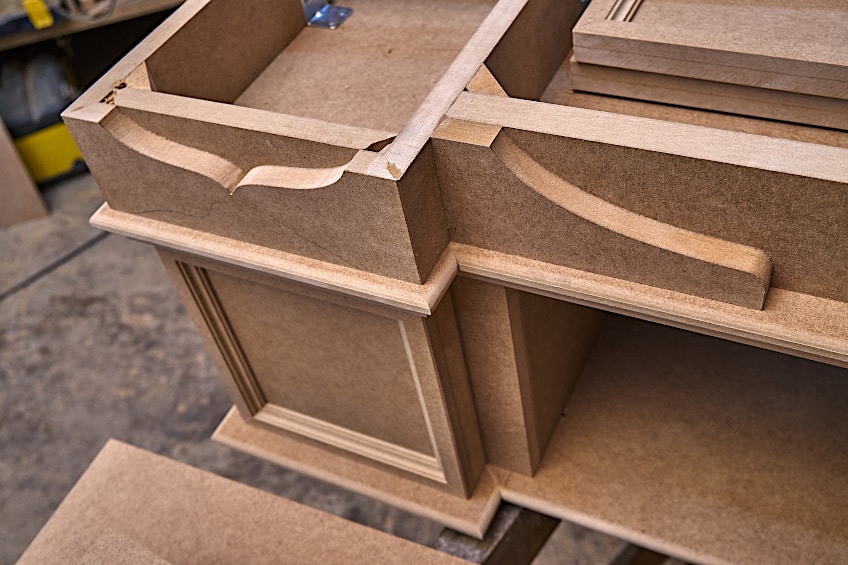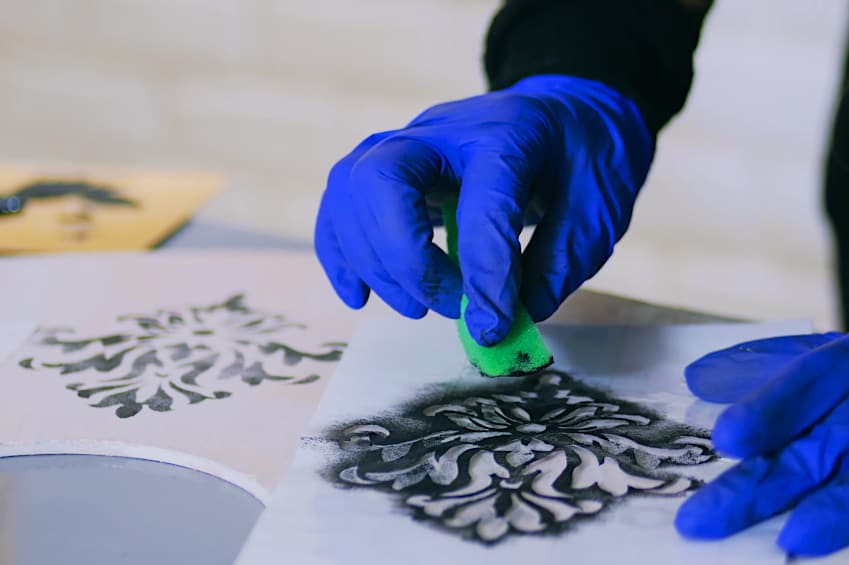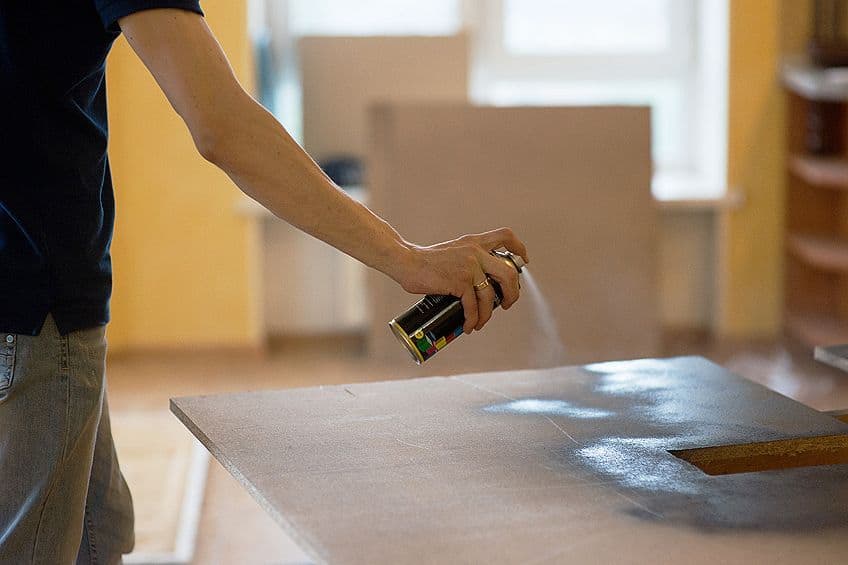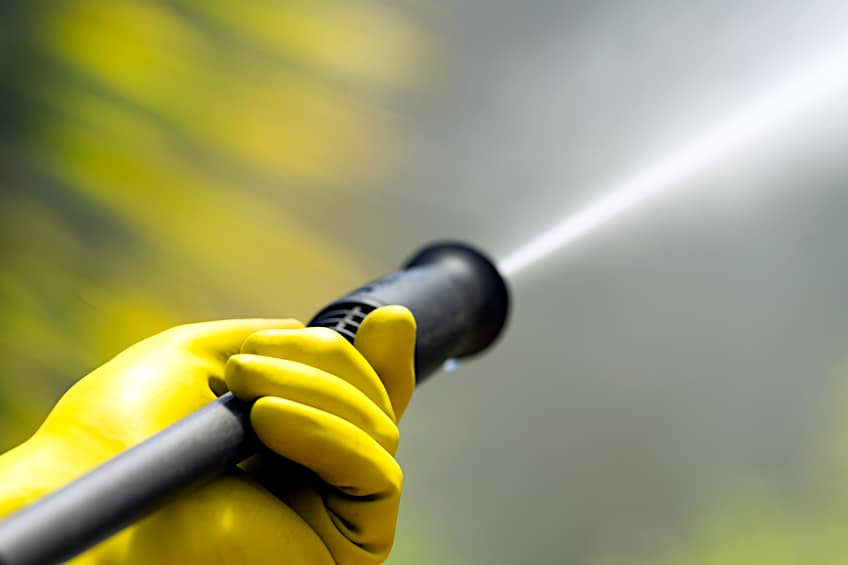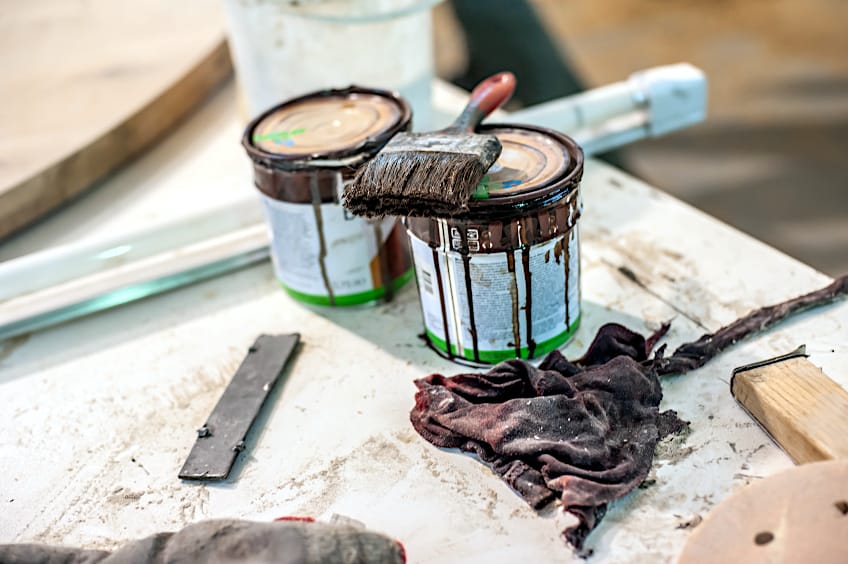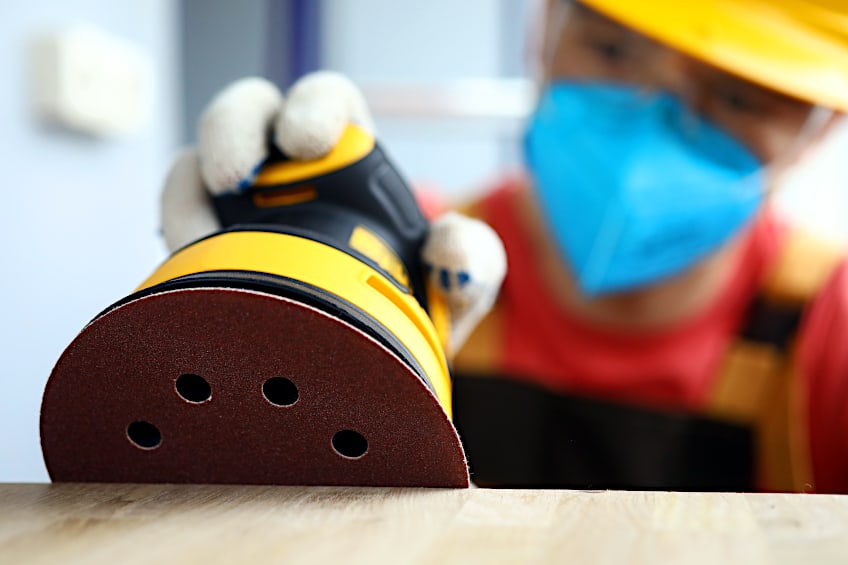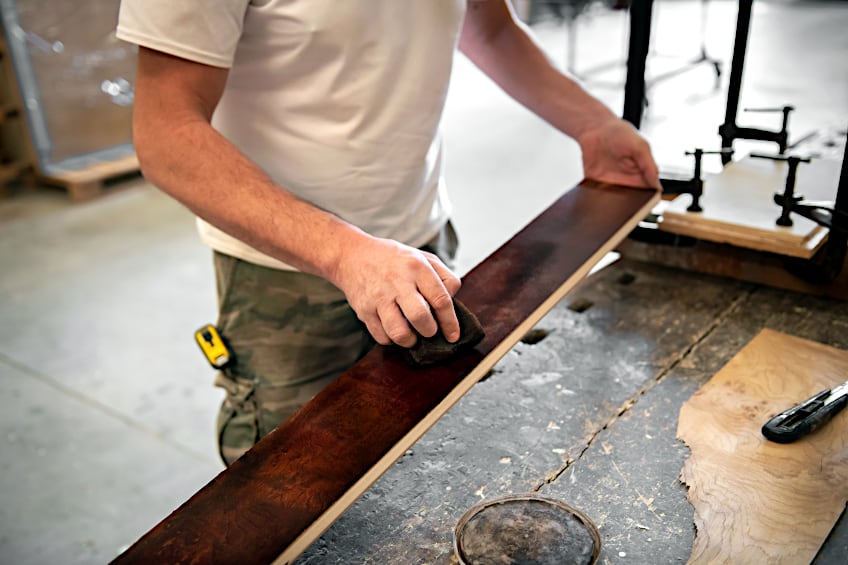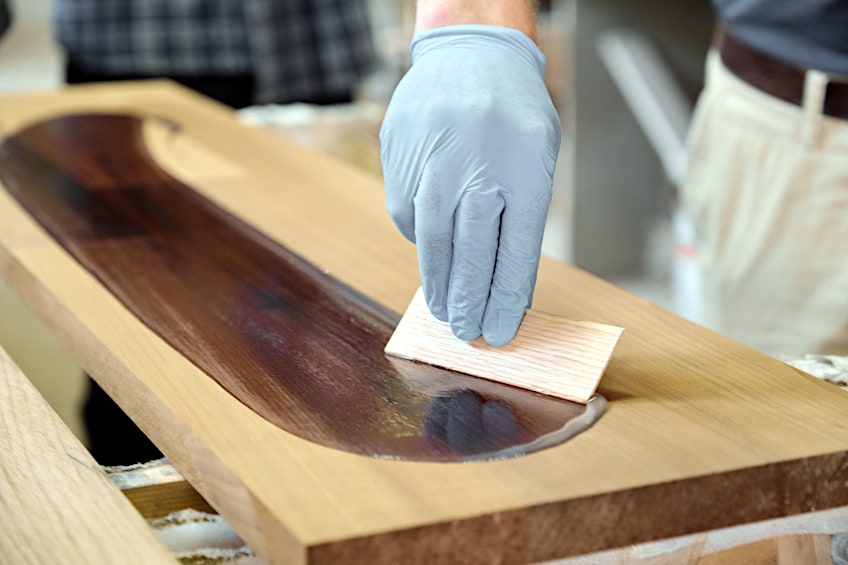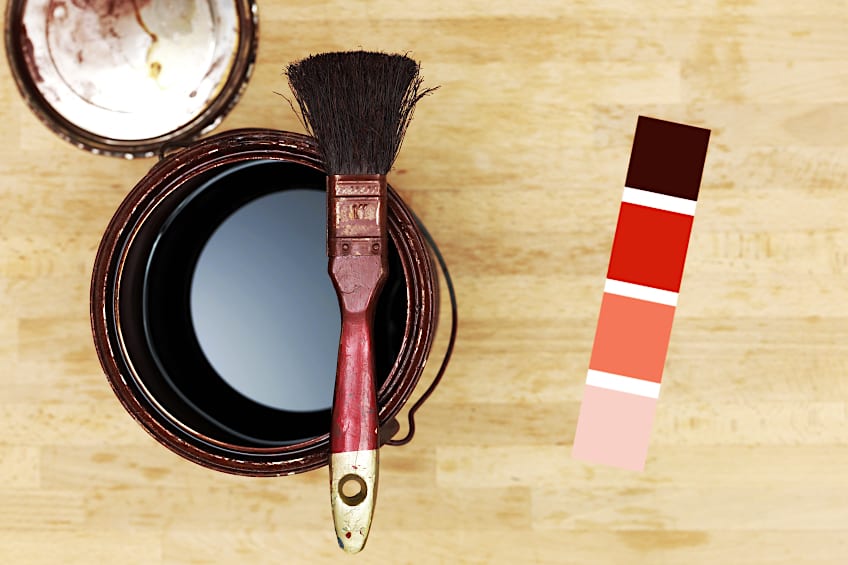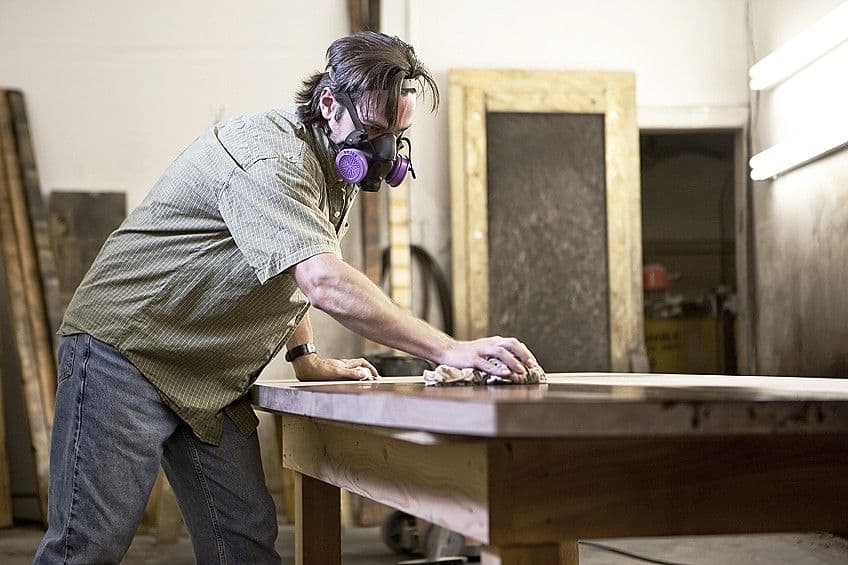Can You Stain MDF? – Finishing Tips for Fiberboard
This post may contain affiliate links. We may earn a small commission from purchases made through them, at no additional cost to you. You help to support resin-expert.com
Staining wood is one of the most popular methods of enhancing its appearance without losing the natural beauty of the material. However, we have found that the process does not always end up being as simple as sanding and staining. Below we will provide an answer to the question, “can you stain MDF?”, and explain the steps of how to do it.
Table of Contents
What Is MDF?
If you look around your home, there is a good chance that you own a piece of furniture that has been built with medium-density fiberboard, or MDF. This material can be used to make stair treads, shelving, as well as cabinets. This composite material is made up of wood fibers that have been through immense pressure and heat as they were glued together with resin.
Staining MDF can be done; however, the completed look does not look nearly as good as natural wood. This is because MDF has no wood grain and it also does not possess the capacity to absorb wood stain as well as standard wood. This means that the steps to produce stained MDF are different compared to working with natural wood.
Keep in mind that the porosity of MDF differs from that of natural wood. Wood gains most of its strength from its integrated grain structure. MDF by contrast, is composed of very thin individual fibers held together purely by adhesive and compression. Introducing too much moisture to MDF will cause those fibers to swell at different rates, destroying the structural integrity of the board, so the amount of stain applied must be carefully controlled. Staining MDF can be incredibly rewarding, but the process is slightly more difficult to complete.
Different Methods of Staining MDF
There are different methods that can be used to stain MDF and each one will produce a different result depending on the chosen method. When it comes down to the process of staining MDF, you will need to ensure that proper preparation has been taken before you can begin applying wood stain. Before we look at the process of applying wood stain to MDF, we will take a look at different methods of staining MDF.
Stenciling
Stencils can be used to incorporate various shapes and designs onto your MDF board before you begin the staining process. For small and very detailed projects, this is an excellent technique to be used. Examples include photo frames that have a large surface area within a very small space. The stenciling technique can also be used when you are attempting to create a unique Ombre effect on your MDF board.
Spray Painting
This technique is great for large MDF boards as you will be able to apply colors much faster compared to other methods. However, this is also a method that is best used on finished projects that are stained with varnish or paint instead of dyes as they are unable to penetrate MDF as deeply. A clear coat of varnish should be applied after this technique is used as this will seal the paint.
Pressure Washing
You would be forgiven for thinking that this is only a method of cleaning MDF boards. Use a pressure washer to give the board a thorough cleaning before applying your wood stain. This method also creates a smooth surface as well as being able to create designs on MDF boards. With this method, your mind is the only limit as you can also use stencils with the pressure washer for unique designs.
Take care to limit the time spent washing the board, as saturating MDF will mean destroying it.
Brush Painting
Using a paintbrush to paint a design onto your MDF board is a great idea for smaller projects such as craft items. Fortunately, you will not be confined to smaller projects as you can do the same for large-scale projects; however, you will need a lot of time and it will take much more effort to complete.
Ombre Effect
The Ombre effect is where a color slowly transitions into another over a particular surface. You will also be able to use different craft items such as stencils on your MDF board to create entirely unique designs. The Ombre effect is a great way to stain the board; however, it can take a long time.
How to Stain MDF Boards
When working with MDF boards, it is always best to exercise extreme caution as this material is made with wood fibers. The issue is when inhaling the fibers that are made of resin and wood as these are prone to float around. To get around this, you need to wear a face mask when sanding or cutting this material. Before you can get started, you will need the following products and tools:
- Lacquer or sealant
- Clean cloths
- Oil-based wood stain
- Paintbrushes
- Sandpaper
Prepare the Surface of the MDF
If you are asking, “Can you stain MDF?”, then you will likely need to know how to prepare the surface before applying anything. You will need to start by sanding the surface with fine-grit sandpaper, anything between 180-grit to 220-grit will work very well to get the finish that you need. Should you start with low-grit sandpaper, it is important to gradually increase the grit as you work towards a smoother finish.
Take care when sanding MDF to avoid the sharp edges of the board or you may get a nasty paper cut.
Upon completion of the sanding process, you will need to ensure that the MDF surface is entirely clean and smooth. If the MDF has a factory paint job or if it has been painted before, this layer of paint can easily be removed with a paint stripper. If it has a layer of varnish or it has been stained, these can be removed with 100 or 120-grit sandpaper.
Choose and Apply Your Desired Finish
Since we are using wood stain, this is what we will be using and an oil-based stain would work best in this scenario as it is darker. Oil-based stain also has a variety of colors available, which makes choosing a color much more enjoyable. Once you have chosen your preferred wood stain, you can start by dipping one of your clean cloths into the wood stain and applying the finish to the MDF.
If you want to know what does stained MDF look like, then ensure you apply the wood stain along the pattern of the wood. For the best possible finish, apply the top coat as uniformly as possible. It is also a good idea to ensure that you take your time when applying your wood stain, as any mistakes that you make will be seen once it dries.
Applying the Sealant
When you have allowed the wood stain to fully cure, you can start applying a clear lacquer or sealant. This can be used to protect the surface of the MDF and by protecting the surface, you will also preserve the appearance of the finished product by doing this. Ensure that the sealant is applied evenly with a clean paintbrush and you need to ensure that it dries before moving the freshly stained and sealed project.
Adding a Faux Wood Appearance
It is possible to give MDF a faux wood look, particularly oak which has a straight wood grain pattern that also has an uneven texture. You can give your MDF the same look when using a wood grain rocker hand tool or by using the faux bois method. You can start off by tinting the glaze a couple of shades darker.
Then you will need to pour the tinted glaze or varnish into a paint pan and apply a thin layer upon the stained surface. With a wood grain rocker, you should carefully make the wood grain texture onto the fresh surface where the glaze had been applied. You will likely need to start from the top corner of the stained surface. Proceed to drag the grain rocker down to get to the end of your project’s surface.
The next step would be to flip the tool and drag it in the opposite direction. Then change the direction of the grain and make a distinctive and beautiful pattern. Once you have finished making the grains, let the glaze cure completely before moving it. If you are looking at creating a new and fresh look for your MDF, this is one of the best ways forward.
Important Tips When Staining MDF Boards
While staining MDF is a project on its own, there are a couple of things that you would need to keep in mind. This information will make a big difference when it comes to the general finish. This is something that you will need to consider as you will always want to achieve the best results. Take a look at the following tips below.
Using the Best Applicator
What you use to apply the wood stain to your MDF project will have a huge impact on the finished product. Some DIY experts will recommend foam brushes, whereas others will suggest bristle brushes. Even if you want to use a clean cloth, we recommend using whatever you are comfortable with as each applicator has pros and cons that need to be considered.
A lint-free cloth can easily provide perfect coverage, but the process is slow. However, foam brushes are great if you would like to finish the job quickly, but the coverage will be uneven.
Test Before Applying
To avoid disappointment, it is best to test the product that you are planning to use before you apply it to the MDF board. We suggest taking a small amount of wood stain and applying it to a spare piece of MDF. Wait until the color dries and if you are happy with the result then you can proceed to stain the entire sheet. Testing your stain ensures that you will have the desired outcome and it will save you time in the long run.
Do Not Forget the Edges
The edges of MDF boards are significantly more porous than that of the surface. This means that staining the edges will not provide the same level of protection when compared to the surface, so if the edges are exposed, it is best to add a layer of primer and then paint to ensure that the project lasts a long time.
Staining MDF is a great way to change the color of the surface, and while it does not provide any visual enhancement to the wood, it is an extremely simple way of changing the overall appearance of the MDF board. You also do not need to apply any primer and you can play around with different types of wood stains to get the finish you would like. Ultimately, staining MDF will only benefit you from an aesthetic standpoint, but it is one of the best projects for beginner DIY enthusiasts. We wish you the best of luck with your project, and we hope that this will be the first of many!
Frequently Asked Questions
Is It Easy to Learn How to Stain MDF Boards?
Yes, but the process can be very time-consuming if done correctly. Always ensure that you complete the preparation before trying to stain the board, as this will determine the quality of your results. With each project you do, you will be able to learn more and get more comfortable with the process. Overall, the project is very easy to complete, and you can play around with different stain colors by mixing them together.
Can You Stain MDF?
Yes, and it is not as difficult as you think. The staining process is different compared to natural wood. However, you will not be able to achieve a vibrant color on MDF using tinted stain, but there are colored MDF boards that can be used. If you want to change the color of the board, you will need to apply a coat of paint. This is a great way for new DIY enthusiasts to change the color of some old MDF boards.
What Does Stained MDF Look Like?
This depends on how much stain you use. For example, with a darker project, you will need to use multiple layers. With lighter MDF boards, you will need to use a dark wood stain with several coats; however, it is important to not apply too much stain as this could introduce too much moisture into the MDF, which will significantly weaken its structure and lead to breakage. Stained MDF simply has a colored surface with no enhancements made to the surface. The most important characteristic to consider is a uniform application.


